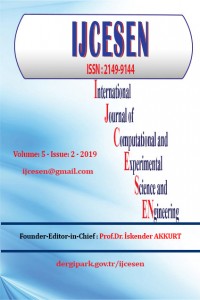Öz
In
video applications it is necessary to continuously measure the video quality
perceived by the end-user. Thus it is desirable to know which parts of video
frame, i.e. which contents, attract viewers’ attention. If this information is
known, then it is possible to estimate perceived video quality in a meaningful
way. However, automatic detection of viewers’ fixation points is time-consuming
process and often is omitted in objective video quality assessment (VQA)
metrics. Based on our previous work, in which we proposed Foveation-based
content Adaptive Root Mean Squared Error (FARMSE) VQA metric, in this work we
propose two new full-reference (FR) VQA metrics called Multi-Point FARMSE
(MP-FARMSE), and Simple-FARMSE (S-FARMSE). Both new-proposed metrics are based
on foveated-vision features of human visual system and spatio-temporal features
of video signal. In MP-FARMSE, by using an engineering approach, we implemented
the fact that viewer’s attention can be directed out of the center of the
frame, thus covering use-cases when objects of interest are not located in the
center of the frame. The main idea when creating the S-FARMSE metric was to
reduce the computational complexity of the final algorithm and to make S-FARMSE
metric capable of processing high-resolution video signals in real-time.
Performances of the new-proposed metrics are compared to performances of seven
existing VQA metrics on two different video quality databases. The results show
that performances achieved by MP-FARMSE and S-FARMSE are quite close to those
of state-of-the-art VQA metrics, whereas at the same time their computational
complexity level is significantly lower.
Anahtar Kelimeler
Kaynakça
- Glavota, Ivan; Kaprocki, Zvonimir; Vranješ, Mario; Herceg, Marijan., No-Reference Real-Time Video Transmission Artifacts Detection for Video Signals. // Journal of Real-Time Image Processing. 1 (2018) , 1; 1-22
- Križanović, Višnja; Žagar, Drago; Grgić, Krešimir; Vranješ, Mario., Enhanced predictive modelling process of broadband services adoption based on time series data. // Advanced engineering informatics. 38 (2018) , October 2018; 142-167
- Pul, Matija; Peković, Vukota; Vranješ, Mario; Grbić, Ratko., Automatic Functionality Verification of Hybrid Set-Top Boxes with Dynamic User Interface. // Ieee transactions on consumer electronics. 64 (2018) , 4; 1-9
- Vranješ, Mario; Rimac-Drlje, Snježana; Vranješ, Denis., Foveation-based Content Adaptive Root Mean Squared Error for Video Quality Assessment. // Multimedia tools and applications. 77 (2018) , 16; 21053-21082
Öz
Kaynakça
- Glavota, Ivan; Kaprocki, Zvonimir; Vranješ, Mario; Herceg, Marijan., No-Reference Real-Time Video Transmission Artifacts Detection for Video Signals. // Journal of Real-Time Image Processing. 1 (2018) , 1; 1-22
- Križanović, Višnja; Žagar, Drago; Grgić, Krešimir; Vranješ, Mario., Enhanced predictive modelling process of broadband services adoption based on time series data. // Advanced engineering informatics. 38 (2018) , October 2018; 142-167
- Pul, Matija; Peković, Vukota; Vranješ, Mario; Grbić, Ratko., Automatic Functionality Verification of Hybrid Set-Top Boxes with Dynamic User Interface. // Ieee transactions on consumer electronics. 64 (2018) , 4; 1-9
- Vranješ, Mario; Rimac-Drlje, Snježana; Vranješ, Denis., Foveation-based Content Adaptive Root Mean Squared Error for Video Quality Assessment. // Multimedia tools and applications. 77 (2018) , 16; 21053-21082
Ayrıntılar
| Birincil Dil | İngilizce |
|---|---|
| Konular | Mühendislik |
| Bölüm | Research Articles |
| Yazarlar | |
| Yayımlanma Tarihi | 31 Temmuz 2019 |
| Gönderilme Tarihi | 31 Ekim 2018 |
| Kabul Tarihi | 30 Temmuz 2019 |
| Yayımlandığı Sayı | Yıl 2019 Cilt: 5 Sayı: 2 |

